Atomic Multifunctional Submarine Cruiser: Paradigm Shift
The first article caused a lot of comments, which can be grouped in several ways:
- the proposed additional equipment will not fit in the submarine, since everything is already packed in it;
- the proposed tactic roughly contradicts the existing tactics of submarine use;
- distributed robotic systems / hypersound better;
- own carrier strike groups (AUG) better.
To begin, consider the technical side of creating AMPPK.
Why did I choose strategic missile submarines (SSBN) of the 955A project as the AMPPK platform?
For three reasons. First, this platform is in a series, therefore, its construction is well mastered by industry. Moreover, the construction of the series is completed in a few years, and if the AMPPK project is worked out in a short time, the construction can be continued on the same stocks. Due to the unification of most of the structural elements: the body, power plant, propulsion, etc. the cost of the complex can be significantly reduced.
On the other hand, we see how slowly the industry is introducing completely new types of weapons into the series. This especially applies to large surface ships. Even new frigates and corvettes are going to the fleet with a significant delay, and I will keep silence about the time frame for the construction of prospective destroyers / cruisers / aircraft carriers.
Secondly, a substantial part of the AMPPK concept, the re-equipment of SSBNs from the carrier of strategic nuclear missiles to the carrier of a large number of cruise missiles, has been successfully implemented in the United States. Four Ohio-type ballistic missile submarines (SSBN-726 - SSBN-729) were converted into carriers of BGM-109 Tomahawk cruise missiles, that is, there is nothing impossible or unrealizable in this process.
Thirdly, the project 955A submarines are one of the most modern in the Russian navy, respectively, have a significant reserve for the future in terms of tactical and technical characteristics.
Why not take the 885 / 885М project in the series as a platform for AMFPK? First of all, because for those tasks for which I consider the use of AMPPK, on the boats of the 885 / 885М project there is not enough space to accommodate the necessary ammunition. According to information from the open press, the boats of this series are quite complex in production. The cost of submarines of the project 885 / 885М from 30 to 47 billion. (from 1 to 1,5 billion dollars), while the cost of SSBN of the 955 project is about 23 billion rubles. (0,7 billion dollars). Prices when the dollar exchange rate 32-33 rub.
In the possible advantages of the platform 885 / 885М - the best sonar equipment, high-speed low-noise underwater travel, greater maneuverability. However, taking into account the absence in the open press of reliable information on these parameters, they have to be put out of the brackets. Also, the re-equipment of the US Navy's SSBN "Ohio" in the SSGNs with the ability to deliver reconnaissance and sabotage groups indirectly indicates that submarines of this class can effectively act "at the front line." SSBN type project 955A should at least not yield to the SSBN / SSGN type "Ohio" in their capabilities. In any case, we will come back to the 885 / 885М project.
Any promising platforms (nuclear submarines (PLA) of the Husky project, submarine Robots etc., etc.) were not considered for the reason that I have no information about the state of the work in these areas, how long they can be implemented and whether they will be implemented at all.
Now consider the main object of criticism: the use of a long-range anti-aircraft missile system (SAM) on a submarine.
Currently the only way to counter aviation the submarines are man-portable air defense systems (MANPADS) of the Igla type. Their use involves the ascent of the submarine to the surface, the exit of the MANPADS operator to the hull of the boat, visual detection of the target, capture by infrared head and launch. The complexity of this procedure, coupled with the low performance of MANPADS, involves its use in exceptional situations, for example, when recharging the batteries of a diesel-electric submarine (DEPL) or repairing damage, that is, in cases where the submarine cannot be submerged.
The concept of using anti-aircraft missiles from under water is being worked out in the world. This is also the French A3SM Mast complex based on MBDA Mistral and A3SM Underwater Vehicle based on medium-range anti-aircraft guided missiles (SAM) of the MBDA MICA class with a firing range of up to 20 km (East 1).
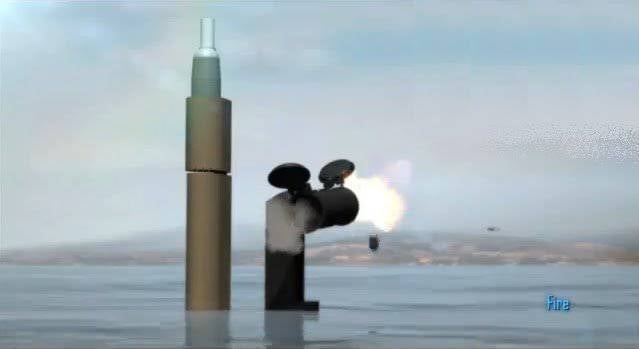
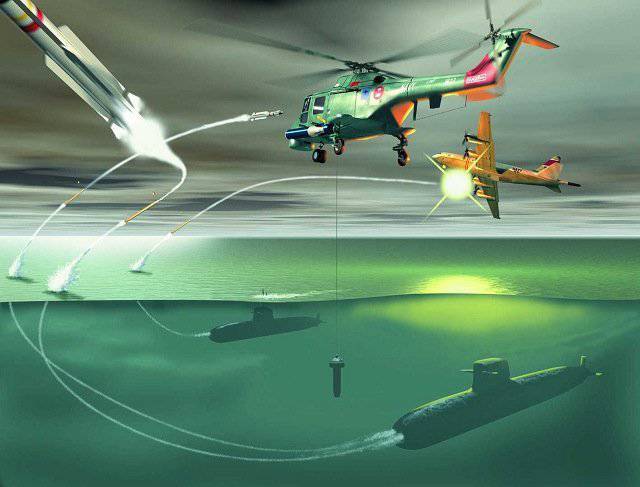
Germany offers IDAS air defense system designed to hit low-flying low-speed targets. (East 2, 3).
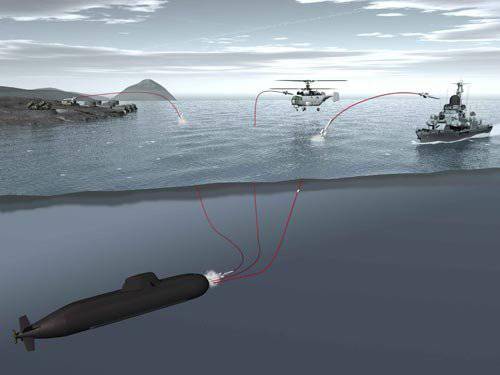
It should be noted that all of the above-mentioned air defense missile systems according to the modern classification can be attributed to short-range complexes with limited capabilities for hitting speeding and maneuvering targets. Although their use does not involve surfacing, it requires lifting to the periscope depth and advancing means of reconnaissance over water, which seems to be considered acceptable by developers. (East 4).
At the same time, the danger to aviation from submarines is increasing. With the 2013, the US Navy began to arrive long-range anti-submarine aircraft of the new generation P-8A "Poseidon". In total, the US Navy plans to purchase the Poseidon 117 to replace the rapidly becoming outdated P-3 Orion, which was developed in the 60s (East 5).
Unmanned aerial vehicles (UAVs) can pose a significant danger to submarines. A feature of the UAV is their extremely high range and flight duration, which allows controlling large areas of the surface.
For the first time, the US Navy deployed an MQ-9 Reaper unmanned aerial vehicle (Predator B) in anti-submarine exercises. The exercises themselves took place last October. The UAV, capable of floating in the air for up to 27 hours, was equipped with a system for receiving signals from sonar buoys scattered from helicopters and data processing equipment. Reaper was able to analyze the received signals and transmit to the control station over a distance of several hundred kilometers. Also, the drone demonstrated the ability to pursue underwater targets (East. 6).
In the arsenal of the US Navy is also a high-altitude UAV long duration flight MC-4C "Triton" (East 7). This aircraft can, with high efficiency, carry out reconnaissance of surface targets and in the future can be equipped to detect submarines by analogy with the sea version of the MQ-9 Predator B. UAV.
Do not forget about the antisubmarine helicopters type SH-60F Ocean Hawk and MH-60R Seahawk with lowered sonar station (GUS).
Since World War II, submarines are virtually defenseless against the actions of aviation. The only thing that a submarine can do when it is detected by an airplane is to try to hide in the depths, get out of the detection zone of an airplane or a helicopter. With this option, the initiative will always be on the side of the attacker.
Why, in this case, the modern air defense missile systems were not installed on submarines before? For a long time, anti-aircraft missile systems were extremely cumbersome systems: bulky rotating antennas, beamed holders of missiles.
Of course, there is no question of placing such a volume on a submarine. But gradually, with the introduction of new technologies, the dimensions of the air defense system decreased, which allowed to place them on compact mobile platforms.
In my opinion, there are the following factors that make it possible to consider the possibility of installing air defense systems on submarines:
1. The appearance of radar stations (RLS) with an active phased array antenna (AFAR), which do not require mechanical rotation of the antenna.
2. The appearance of missiles with active radar homing heads (ARLGSN) that do not require illumination of the target radar after launch.
At the moment, it is close to adopting the newest Prometheus C-500 air defense system. On the basis of the land variant, the design of the marine version of this complex is expected. In parallel, we can consider the creation of a variant of the C-500 “Prometheus” air defense missile system for AMFPK.
When studying the layout, we can be based on the structure of the C-400 SAM system. The basic composition of the system 40P6 (C-400) includes (East 8, 9):
- Combat Command and Control Station (PBU) 55K6Е;
- radar complex (RLK) 91H6E;
- multifunctional radar (MRLS) 92НХNUMXЕ;
- transport launchers (TPU) of type 5P85TE2 and / or 5P85SE2.
A similar structure is planned for the C-500 air defense system. In general, the components of the system:
- control equipment;
- radar detection;
- radar guidance;
- means of destruction in launch canisters.
Each element of the complex is located on the chassis of a special off-road truck, where, besides the equipment itself, there are places for operators, life support systems and energy sources of the elements of the complex.
Where can these components be located on AMFPK (platform project 955А)? To begin with, it is necessary to understand the volumes released when replacing the Bulava ballistic missiles with the AMFPK arsenal. The Bulava missile in a container is 12,1 m, the 3М-54 rocket of the Caliber complex is up to 8,2 m (the largest of the rocket family), the 800 P Onyx missile is 8,9 m - 40 m. On this basis, the volume of the weapons compartment can be reduced in height by about three meters. Taking into account the area of the armament compartment, this is quite a flat, that is, the volume is significant. Also, to ensure the launch of ballistic missiles in the SSBN, it is possible that there is some specialized equipment that can also be excluded.
Based on this…
The control equipment of the air defense missile system can be placed in the compartments of the submarine. Since the design of the SSBN of the 955A project, about five years have passed, during this time the equipment changes, new design solutions appear. Accordingly, when designing AMPPK, it is quite realistic to find several cubic meters of additional volumes. If not, then place the control compartment of the air defense missile system in the free space of the weapons compartment.
Means of destruction in launch canisters are placed in the new weapons bay. To ensure the ability of the air defense missile system at periscope depth, of course, with the advancement of the radar mast to the surface, the missile defense system can be adapted to launch from under the water, by analogy with the Kalibr / Onyx missiles or in the form of pop-up containers (East 10).
All the other weapons offered for AMFPK initially have the ability to use from under water.
Placement of radar on a lifting mast. Depending on the layout of the weapons compartment, two options for radar placement can be considered:
- Conformal accommodation on the sides of the felling;
- placing the horizontal along the body (in the folded state inside the weapon compartment);
- vertical placement, similar to the placement of the Bulava ballistic missiles.
Conformal placement on the sides of the felling. Plus: does not require massive retractable structures. Minus: degrades the hydrodynamics, degrades the noise of the stroke, requires an ascent to apply the missile defense, there is no possibility to detect low-flying targets.
Placement horizontally along the hull. Plus: you can implement a fairly high mast, which allows you to raise the antenna at the periscope depth. Minus: in the folded state may partially overlap the starting cells in the weapons compartment.
Placement vertically. Plus: you can implement a fairly high mast, which allows you to raise the antenna at the periscope depth. Minus: reduces the amount of ammunition in the weapons compartment.
The last option seems to me preferable. As mentioned earlier, the maximum height of the compartment is 12,1 m. The use of telescopic structures will allow the radar of ten to twenty tons to be brought to a height of about thirty meters. A submarine located at the periscope depth will allow the radar to be raised above the water to a height of fifteen to twenty meters.
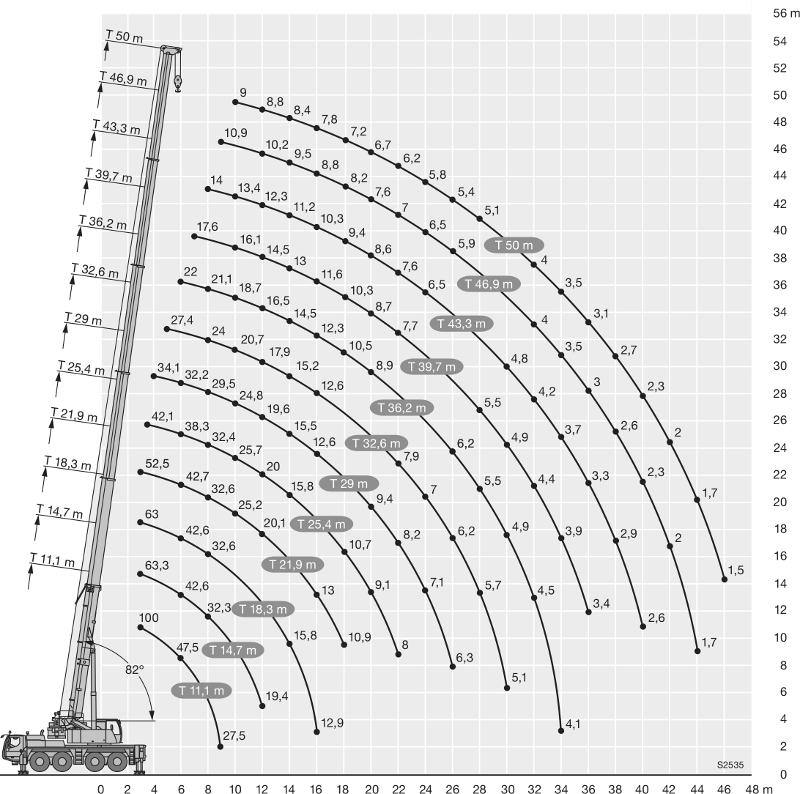
As we saw above, the C-400 / C-500 type air defense system consists of two types of radar: search radar and guidance radar. First of all, this is due to the need for guiding missiles without ARLGSN. In some cases, as for example, it is implemented in one of the best destroyers of the Dering type, the radars used differ in wavelength, allowing you to effectively use the advantages of each (East.11).
Perhaps, taking into account the introduction of the AESA in C-500 and the expansion of the range of means of destruction with ARLGSN, in the maritime version it will be possible to abandon the surveillance radar, carrying out its guidance radar function. In aviation technology, this has long been the norm; all functions (and reconnaissance and guidance) are performed by one radar.
Cloth radar should be removed in a sealed radio transparent container that provides protection from sea water at periscope depth (up to ten to fifteen meters). When designing the mast, you need to implement solutions to reduce visibility, similar to those used in the development of modern periscopes. (East.12). This is necessary to minimize the probability of detecting AMPPK when AFAR is operating in the passive mode or in the LPI mode with a low probability of signal interception.
In the low probability of intercept (LPI) mode, the radar emits low-energy pulses in a wide frequency range, using a technique called broadband transmission. When multiple echoes are returned, the radar signal processor combines these signals. The amount of energy reflected back to the target is at the same level as that of a conventional radar, but since each LPI pulse has a significantly smaller amount of energy and a different signal structure, it will be difficult to detect the target — both the signal source and the fact of irradiation radar.
For missiles with ARLGSN, the possibility of issuing target designation from a submarine periscope can be realized. This may be necessary, for example, if it is necessary to destroy a single low-altitude, low-speed target of the anti-submarine helicopter type, when it is impractical to advance the radar mast.
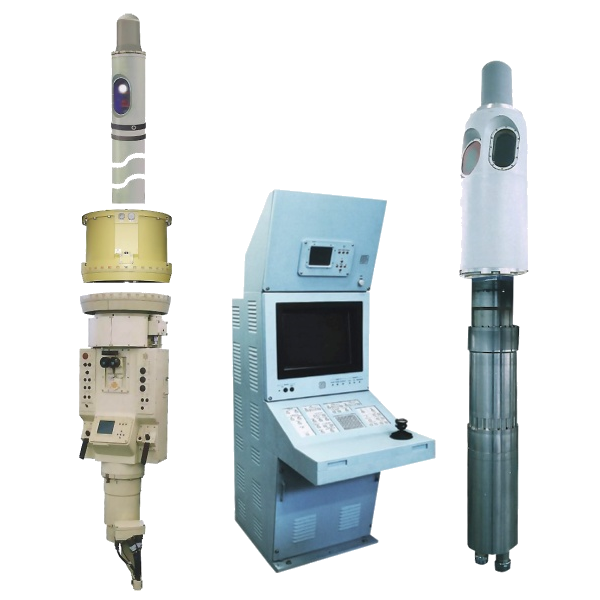
The complex provides:
- a circular view of the drive surface and airspace during daylight, at dusk and at night;
- detection of surface, air and coastal objects;
- determination of the distance to the observed sea, air and coastal objects;
- determination of the bearing of objects;
- measurement of course angles and elevation angles of objects;
- reception of signals from satellite navigation systems "Glonass" and GPS.
CPC "Parus-98E" consists of a commander's periscope and a universal non-penetrating type periscope (optronic mast). The commander’s periscope includes a visual optical channel and a night television channel. The universal periscope includes a television channel, a thermal imaging channel, a laser distance measuring channel, an antenna system for receiving signals from satellite navigation systems (East 13).
In any case, this will require additional interfacing between the air defense system and the ship's systems, but it is more efficient than installing a separate optical radar station (OLS) on the mast or placing it (OLS) on the radar mast.
I hope the question “the proposed equipment will not fit into the submarine, since everything is already packed in as close as possible ”, it has been considered in sufficient detail.
The cost issue.
The cost of SSBN of the Borey 955 project is 713 million dollars (the first ship), the Ohio SSBN is 1,5 billion (in 1980 prices of the year). The cost of conversion of the Ohio-type SSBN to the SSGN is about 800 million dollars. The cost of one C-400 division is about 200 million dollars. Roughly from these figures it is possible to form the order of prices for AMFPK - from 1 to 1,5 billion dollars, that is, the cost of AMFPK should approximately correspond to the cost of submarines of the 885 / 885М project.
We now turn to the tasks for which, in my opinion, AMPPK is intended.
Despite the fact that the largest number of comments caused the use of AMPPK against aircraft carriers, in my opinion, the most priority task of AMPPK is the implementation of antimissile defense (ABM) at the initial (possibly average) segment of the flight of ballistic missiles.
Quote from the first article:
The share of US nuclear warheads deployed on SSBNs over 50% of the entire nuclear arsenal (of the order of 800 — 1100 warheads), Britain — 100% of the nuclear arsenal (of the order of 160 warheads on four SSBNs), France — 100% of strategic nuclear charges (of the order of 300 on nuclear submarines) four SSBNs).
Destruction of the enemy's SSBNs is one of the top priorities in the event of a global conflict. However, the task of destroying a SSBN is complicated by the concealment by the enemy of the SSBN patrol areas, the difficulty of determining its exact location and the presence of combat escort.
If there is information about the approximate location of the enemy SSBNs in the oceans, AMPPK may be on duty in the area along with hunter submarines. In the event of a global conflict, the hunter boat is assigned the task of destroying the enemy SSBNs. In the event that this task is not completed or the SSBN began launching ballistic missiles before the moment of destruction, AMPFK is charged with the task of intercepting the launching ballistic missiles in the initial part of the trajectory.
The ability to solve this problem depends primarily on the speed characteristics and range of the use of promising missiles from the C-500 complex, intended for anti-missile defense and the destruction of artificial earth satellites. If these capabilities are provided with missiles from the C-500, then AMPPK can realize a "blow to the head" to the strategic nuclear forces of the NATO countries.
The destruction of the launching ballistic missile in the initial part of the trajectory carries the following advantages:
1. The launching rocket cannot maneuver and has maximum visibility in the radar and thermal range.
2. The defeat of one missile can destroy several combat units, each of which can destroy hundreds of thousands or even millions of people.
3. To destroy a ballistic missile in the initial part of the trajectory, knowledge of the exact location of the enemy SSBNs is not required, it is sufficient to be in the range of the antimissile action.
For a long time, the topic has been discussed in the media that the deployment of missile defense elements near the borders of Russia will potentially allow the destruction of ballistic missiles in the initial part of the trajectory until the separation of combat units (CU). Their deployment will require the deployment of a ground-based missile defense component deep in the territory of the Russian Federation. Similar danger to the maritime component is represented by the United States AUG with Ticonderoga type cruisers and the Arly Burke destroyers. (Source 14, 15, 16, 17).
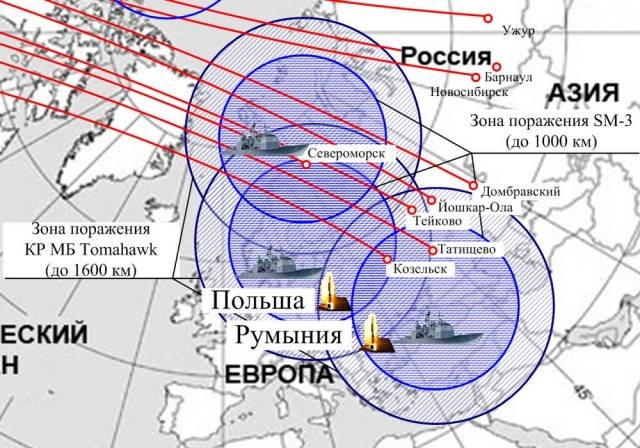
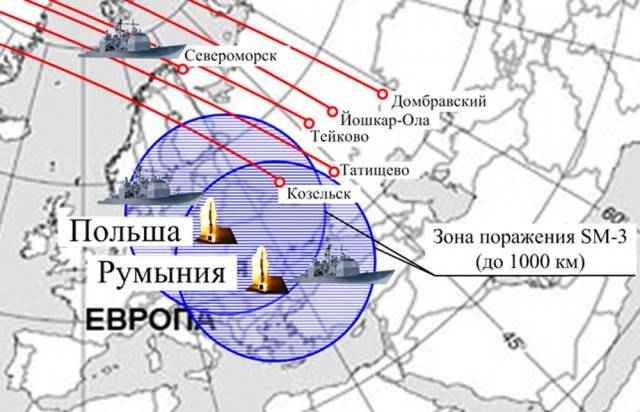
Having deployed AMPPK in the US SSBN patrol areas, we will turn the situation on its head. Now the United States will have to look for ways to further cover its SSBNs to ensure the guaranteed possibility of a nuclear strike.
The possibility of creating hit-to-kill warheads in Russia, which defeat a target with a direct hit at high altitudes, is under question, although for C-500 this possibility seems to be as stated. However, since the USSOLS positioning areas are located at a considerable distance from the territory of Russia, special combat units (MF) can be installed on AMFPK antimissiles, significantly increasing the likelihood of launching ballistic missiles. Radioactive fallout in this version of the missile defense missile will fall at a considerable distance from the territory of Russia.
Considering that the naval component of strategic nuclear forces is the main one for the USA, the threat of its neutralization cannot be ignored by them.
The solution of this task by surface ships or their connections is impossible, since they are guaranteed to be detected. In the future, the US SSBN will either change the patrol area, or, in the event of a conflict, the surface ships will be preventively destroyed by the US Navy and Air Force.
You can ask the question: Is it not wise to destroy the missile carrier itself - the SSBN? Of course, this is much more efficient, since with one blow we will destroy dozens of missiles and hundreds of warheads, however, if we learn by agent or technical means to know the SSBN patrol area, this does not mean that we can find out its exact location. To destroy an enemy submarine SSBN by an underwater hunter, he must approach it at a distance of about fifty kilometers (the maximum range for using torpedo weapons). Most likely, a PLA of cover may be located somewhere nearby, which will actively counteract this.
In turn, the range of promising antimissiles can reach five hundred kilometers. Accordingly, at a distance of several hundred kilometers to find AMPPK will be much more difficult. Also, knowing the enemy's SSBN patrolling area and the direction of the missile flight, we can place AMPPK on a follow-up course, when anti-missiles will hit ballistic missiles flying in their direction.
Will AMPPK be destroyed after the radar is turned on and anti-missile missiles are launched against the launching ballistic missiles? Perhaps, but not necessarily. In the event of a global conflict, missile defense bases in Eastern Europe, Alaska, and ships capable of performing missile defense will be struck weapons with nuclear warheads. In this case, we will find ourselves in a winning situation, since the coordinates of the stationary bases are known in advance, surface ships near our territory will also be detected, but whether an AMFPK will be detected is the question.
In such circumstances, the likelihood of large-scale aggression, including the application of the so-called disarming first strike, becomes extremely unlikely. The presence of AMPPK in service and the uncertainty of its location will not allow a potential adversary to be sure that the “disarming” first strike scenario will develop according to plan.
This task is, in my opinion, the main one for AMFPK!
Justification of the need to deploy a full-fledged air defense missile system on submarines, tactics of using AMFPK, comparison of functionality with surface ships, incl. with carrier strike groups I will try to consider in the next article.
List of sources used
1. DCNS Offer ZRK for submarines.
2. Submarine armament replenished with anti-aircraft missiles.
3. France creates a submarine SAM system.
4. The development of submarine air defense systems.
5. US Navy Aviation Received New Anti-Submarine Aircraft.
6. US drone first went on the hunt for a submarine.
7. UAV scout "Triton" will see everything.
8. Anti-aircraft missile system of long and medium range C-400 "Triumph".
9. Anti-aircraft missile system C-400 "Triumph" in detail.
10. Anti-aircraft autonomous universal self-defense complex of submarines.
11. Dragons in the service of Her Majesty.
12. Raise the periscope!
13. Unified Periscope Complex "Sail-98".
14. The Russian Armed Forces General Staff told how the US missile defense can intercept Russian missiles.
15. The US missile defense threat to the nuclear potentials of the Russian Federation and China has been underestimated.
16. "Aegis" - a direct threat to Russia.
17. EuroPRO threatens Russia's security.
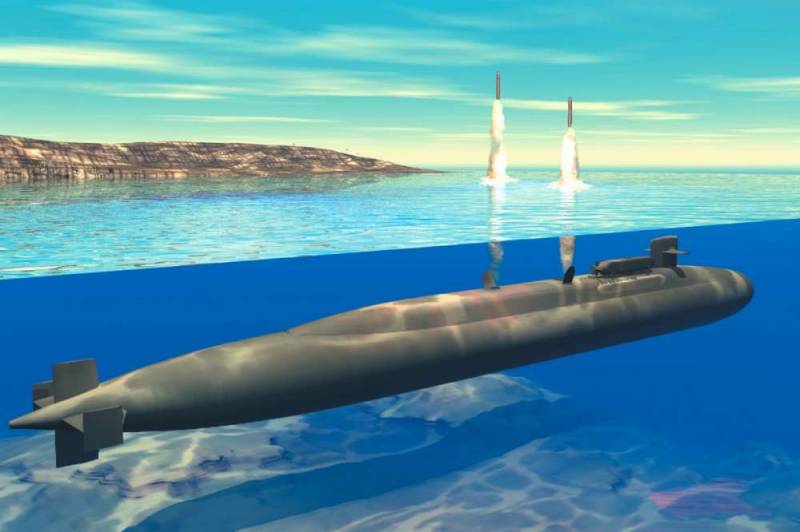
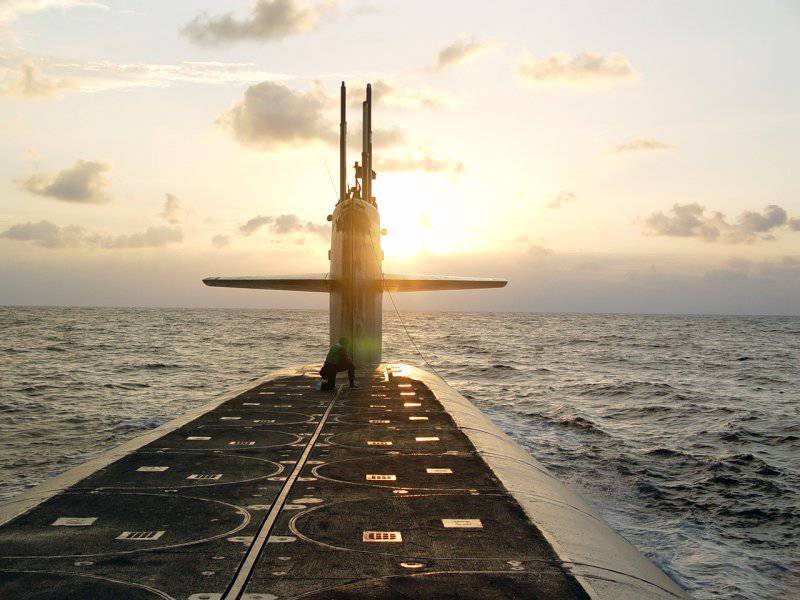

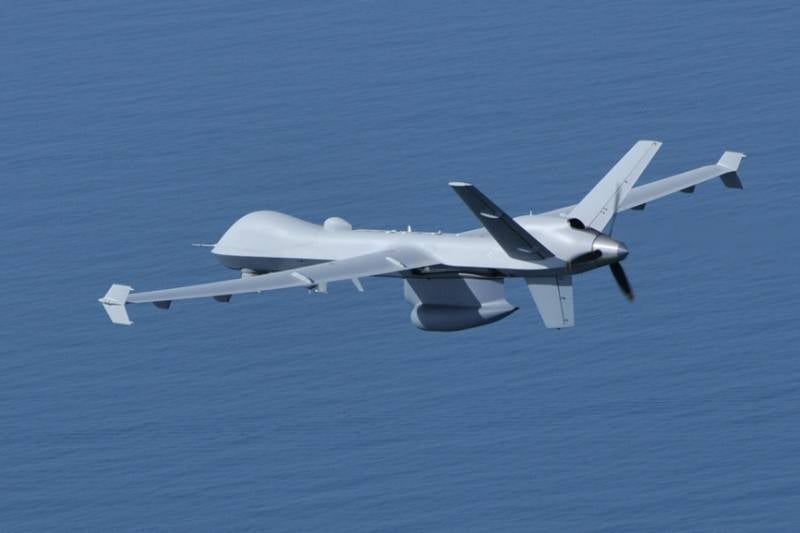
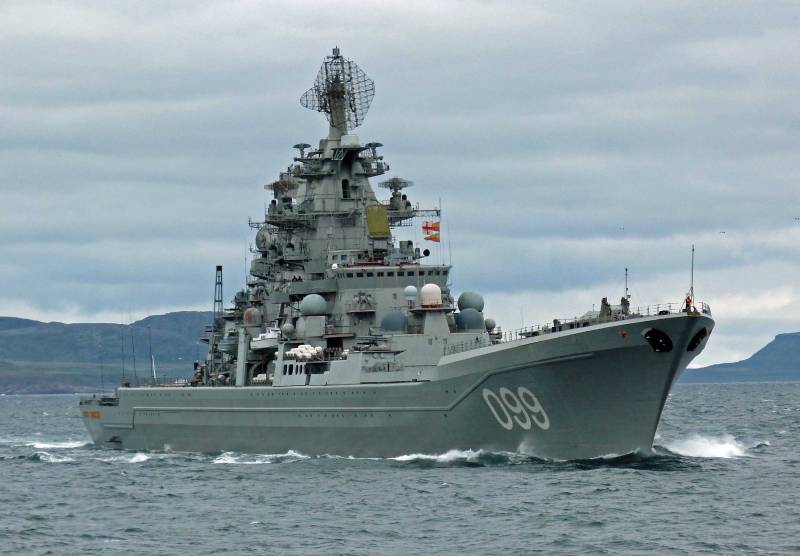
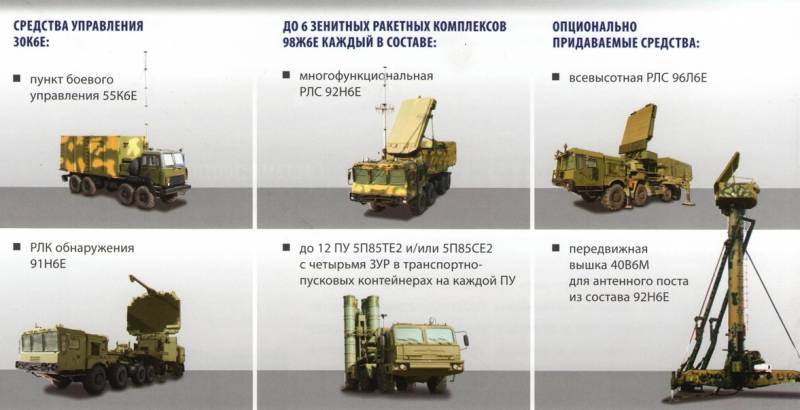
Information